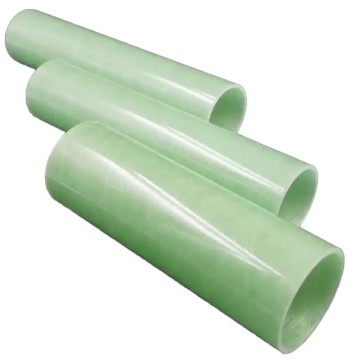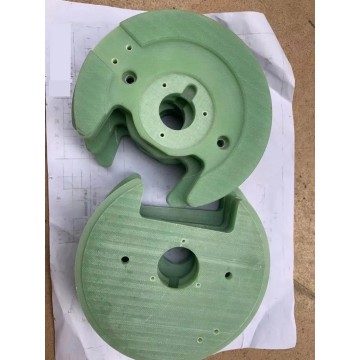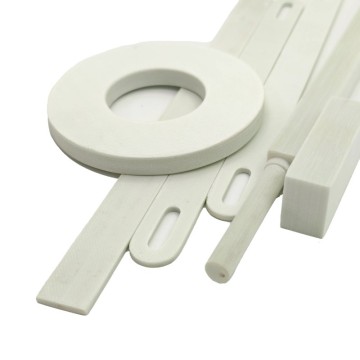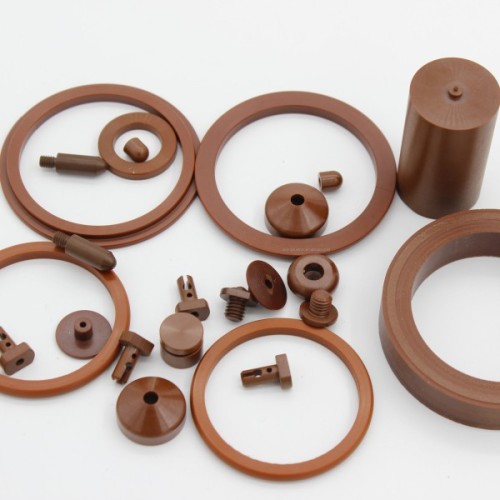
Polyimide CNC machining part
- Min. Order:
- 1 Piece/Pieces
- Min. Order:
- 1 Piece/Pieces
- Transportation:
- Ocean, Land, Air, Express
- Port:
- Shenzhen, Guangzhou, Hongkong
Quantity:
Your message must be between 20 to 2000 characters
Contact NowBasic Info
Basic Info
| Supply Ability: | 100 |
|---|---|
| Payment Type: | T/T,Paypal |
| Incoterm: | FOB,CFR,CIF,EXW,DDP,DDU |
| Transportation: | Ocean,Land,Air,Express |
| Port: | Shenzhen,Guangzhou,Hongkong |
Product Description
Product Description
As a special engineering material, polyimide has been widely used in aviation, aerospace, microelectronics, nano, liquid crystal, separation membrane, laser and other fields. Recently, all countries are including the research, development and utilization of polyimide as one of the most promising engineering plastics in the 21st century. Polyimide, because of its outstanding features in performance and synthesis, whether as a structural material or as a functional material, its huge application prospects have been fully recognized, known as the “problem solver” (protion solver), and that “there is no polyimide will not have today's microelectronics technology.
Performance of polyimide
1, all-aromatic polyimide according to thermogravimetric analysis, the beginning of the decomposition temperature is generally around 500 ℃. Synthesized by biphenyl dianhydride and p-phenylenediamine polyimide, thermal decomposition temperature of 600 ℃, is so far one of the highest thermal stability of polymers.
2, polyimide can withstand extremely low temperatures, such as -269 ℃ in the liquid helium will not be brittle.
3, polyimide has excellent mechanical properties, unfilled plastic tensile strength are more than 100Mpa, homobenzene-type polyimide film (Kapton) for more than 170Mpa, and biphenyl polyimide (UpilexS) up to 400Mpa. as an engineering plastics, the amount of elastic film is usually 3-4Gpa, the fiber can be up to 200Gpa, according to theoretical calculations, benzene dianhydride and p-phenylenediamine synthesized fibers up to 500Gpa, second only to carbon fiber.
4, some varieties of polyimide insoluble in organic solvents, dilute acid stability, general varieties are not very resistant to hydrolysis, this seems to be a disadvantage of the performance of polyimide is different from other high-performance polymers, a great feature, that is, alkaline hydrolysis can be used to recover raw materials such as dianhydride and diamine, such as for the Kapton film, the recovery rate of up to 80% -90%. Change the structure can also get quite resistant to hydrolysis varieties, such as withstand 120 ℃, 500 hours of boiling.
5, the coefficient of thermal expansion of polyimide in 2 × 10-5-3 × 10-5 ° C, wide into thermoplastic polyimide 3 × 10-5 ° C, biphenyl type up to 10-6 ° C, individual varieties of 10-7 ° C.
6, polyimide has a high resistance to irradiation, its film in 5 × 109rad fast electron irradiation strength retention rate of 90%.
7, polyimide has good dielectric properties, dielectric constant of 3.4 or so, the introduction of fluorine, or air nanometer size dispersed in polyimide, the dielectric constant can be reduced to about 2.5. Dielectric loss of 10-3, dielectric strength of 100-300KV/mm, Guangcheng thermoplastic polyimide for 300KV/mm, volume resistance of 1017/cm. these properties in a wide range of temperatures and frequency range can still be maintained at a high level.
8, polyimide is a self-extinguishing polymer, low fuming rate.
9, polyimide in a very high vacuum under very little outgassing.
10, polyimide non-toxic, can be used to manufacture tableware and medical instruments, and withstand thousands of times sterilization. There are some polyimide also has a very good biocompatibility, for example, in the blood compatibility test for non-hemolytic, in vitro cytotoxicity test for non-toxic.
Multiple pathways on synthesis:
Polyimide varieties, forms, in the synthesis of a variety of ways, so you can choose according to a variety of applications, the synthesis of this adaptability is also difficult to have other polymers.
1,polyimide is mainly synthesized by dianhydride and diamine, these two monomers and many other heterocyclic polymers, such as polybenzimidazole, polybenzimidazole, polybenzothiazole, polyquimorpholine and polyquinoline and other monomers compared to the source of raw materials is wide, and the synthesis is also easier. Dianhydride, diamine varieties, different combinations can be obtained from different properties of polyimide.
2,polyimide can be dianhydride and diamine in polar solvents, such as DMF, DMAC, NMP or THE / methanol mixed solvents in the first low-temperature polycondensation, to obtain soluble polyamido acid, film or spinning, heated to 300 ℃ or so dehydrated into a ring into a polyimide; can also be added to the polyamido acid of ethanoic anhydride and tertiary amine catalysts for the chemical dehydration cyclization, to get the polyimide solution and powder. Polyimide solution and powder. Diamine and dianhydride can also be heated in high boiling point solvents, such as phenolic solvents polycondensation, a step to obtain polyimide. In addition, polyimide can also be obtained by the reaction of the dibasic ester of tetradentate and diamine; it can also be transformed into polyisoimide by polyamidoic acid first, and then transformed into polyimide. These methods are convenient for processing, the former is called the PMR method, can obtain low viscosity, high solid solution, in the processing of a window with low melt viscosity, especially suitable for the manufacture of composite materials; the latter increases the solubility, in the process of transformation does not release low molecular compounds.
3,as long as the purity of the dianhydride (or tetraacid) and the diamine is qualified, regardless of the polycondensation method, it is easy to obtain a sufficiently high molecular weight, and the addition of the unitary anhydride or the unitary amine can also easily regulate the molecular weight.
4,condensation with dianhydride (or tetraacid) and diamine, as long as it reaches the first-class molar ratio, heat treatment in a vacuum, the molecular weight of the solid low molecular weight prepolymer can be greatly increased, thus bringing convenience to the processing and powder formation.
5,it is easy to introduce reactive groups at the end of the chain or on the chain to form reactive oligomers, thus obtaining thermosetting polyimide.
6,using the carboxyl group in polyimide, esterification or salting, the introduction of photosensitive groups or long-chain alkyl to get amphiphilic polymers, which can be obtained photoresist or used in the preparation of LB film.
7,the general process of synthesizing polyimide does not produce inorganic salts, which is particularly advantageous for the preparation of insulating materials.
8,as the monomer of the dianhydride and diamine in a high vacuum is easy to sublimate, so it is easy to use the vapor deposition method in the workpiece, especially the uneven surface of the device to form polyimide film.
Applications of Polyimide:
As a result of the above polyimide in the performance and synthetic chemistry, in the many polymers, it is difficult to find such as polyimide has such a wide range of application aspects, and in each of these aspects have shown extremely outstanding performance.
1,film: polyimide is one of the earliest commodities, used for motor slot insulation and cable winding materials. The main products are DuPont Kapton, UBE Upilex series and Chung Yuan Apical. transparent polyimide film can be used as a soft solar cell backing plate.
2,coating: Used as insulating varnish for electromagnetic wires, or as high temperature resistant coating.
3,advanced composites: Used in aerospace, aircraft and rocket components. It is one of the most high temperature resistant structural materials. For example, the United States of America's supersonic airliner program designed for the speed of 2.4M, the flight surface temperature of 177 ℃, the requirements of the service life of 60,000h, it has been reported that 50% of the structural materials have been identified for the thermoplastic polyimide as a matrix resin carbon fiber reinforced composite materials, the amount of each aircraft is about 30t.
4,fiber: modulus of elasticity second only to carbon fiber, as a high temperature media and radioactive material filtering materials and bulletproof, fireproof fabric.
5,foam: used as high temperature insulation materials.
6,engineering plastics: thermosetting and thermoplastic, thermoplastic can be molded or injection molding or transfer molding. Mainly used for self-lubricating, sealing, insulation and structural materials.
7,adhesive: used as high temperature structural adhesive. Guangcheng polyimide adhesive as a high insulation potting material for electronic components has been produced.
8, separation membrane: used for a variety of gas pairs, such as hydrogen/nitrogen, nitrogen/oxygen, carbon dioxide/nitrogen or methane, etc., from the air hydrocarbon raw material gas and alcohols to remove water. It can also be used as permeation evaporation membrane and ultrafiltration membrane. Due to the polyimide heat and organic solvent resistance, in the separation of organic gases and liquids is of particular importance.
9, photoresist: there are negative and positive gel, the resolution can reach submicron level. With pigments or dyes can be used for color filter film, can greatly simplify the processing procedures.
10, in microelectronic devices: used as a dielectric layer for interlayer insulation, as a buffer layer can reduce stress, improve yield. As a protective layer can reduce the impact of the environment on the device, but also a-particle shielding, to reduce or eliminate the device's soft error (softerror).
11, liquid crystal display with the orientation of the alignment agent: polyimide in the TN-LCD, SHN-LCD, TFT-CD and the future of the ferroelectric liquid crystal display of the orienting agent materials are occupying a very important position.
12, electric - optical materials: used as passive or active waveguide materials, optical switch materials, etc., fluorine-containing polyimide in the range of communication wavelengths for the transparent, polyimide as a chromophore matrix can improve the stability of the material.
Outlook:
Polyimide as a very promising polymer materials have been fully recognized, in the insulating materials and structural materials applications are expanding. In the functional materials is emerging, and its potential is still being explored. However, after 40 years of development, it has not yet become a larger variety, the main reason is that, compared with other polymers, the cost is still too high. Therefore, one of the main directions of future polyimide research should still be in the monomer synthesis and polymerization methods to find ways to reduce costs.
1, monomer synthesis: polyimide monomer is two anhydride (tetra acid) and diamine. Diamine synthesis method is more mature, many diamines have commercial supply. Dianhydride is a more special monomer, in addition to be used as a curing agent for epoxy resins are mainly used in the synthesis of polyimide. Benzene tetracarboxylic acid dianhydride and trimellitic anhydride can be extracted from petroleum refinery products, heavy aromatic oils of tetramethylbenzene and trimethylbenzene with gas-phase and liquid-phase oxidation in one step. Other important dianhydrides, such as diphenyl ketone dianhydride, biphenyl dianhydride, diphenyl ether dianhydride, and hexafluorodianhydride have been synthesized by various methods, but the cost is very expensive, for example, hexafluorodianhydride reaches tens of thousands of dollars per kilogram. Changchun Institute of Applied Chemistry of the Chinese Academy of Sciences developed by the o-xylene chlorinated, oxidized and then separated by isomerization can be obtained from the high-purity 4-chlorophthalic anhydride and 3-chlorophthalic anhydride, the two compounds can be synthesized from a series of dianhydride as a raw material, and its potential to reduce the cost of a great deal of synthesis, is a valuable route.
2, polymerization process: the current use of two-step, one-step polycondensation process are using high boiling point solvents, non-protonic polar solvents are more expensive, but also difficult to get rid of, and finally need to be processed at high temperatures. PMR method uses cheap alcohol solvents. Thermoplastic polyimide can also use dianhydride and diamine directly in the extruder polymerization granulation, no longer need solvents, can greatly improve efficiency. Chlorinated phthalic anhydride without dianhydride, directly and diamine, bisphenol, sodium sulfide or monosulfur polymerization to get polyimide is the most economical synthetic route.
3, processing: the application of polyimide is so wide, for processing is also a variety of requirements, such as high uniformity of the film, spinning, gas phase precipitation, sub-micron lithography, depth of the straight wall etching, large-area, large-volume molding, ion implantation, laser precision machining, nano-hybridization technology, and so on for the application of polyimide to open up a wide world.
With the further improvement of synthetic processing technology and cost reduction, while having superior mechanical properties, electrical insulation properties, thermoplastic polyimide will certainly show its more prominent role in the future field of materials. And thermoplastic polyimide and its good processability and more favorable.
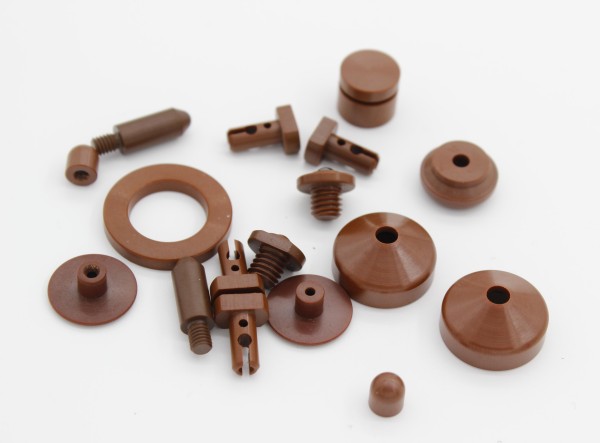
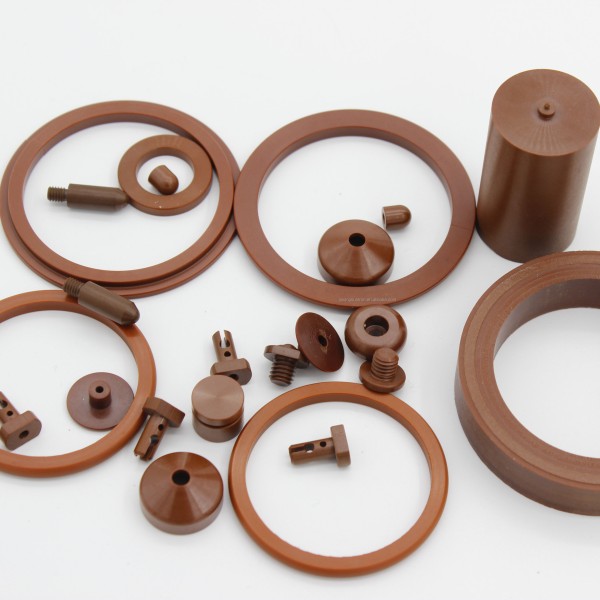
Related Keywords
Related Keywords









